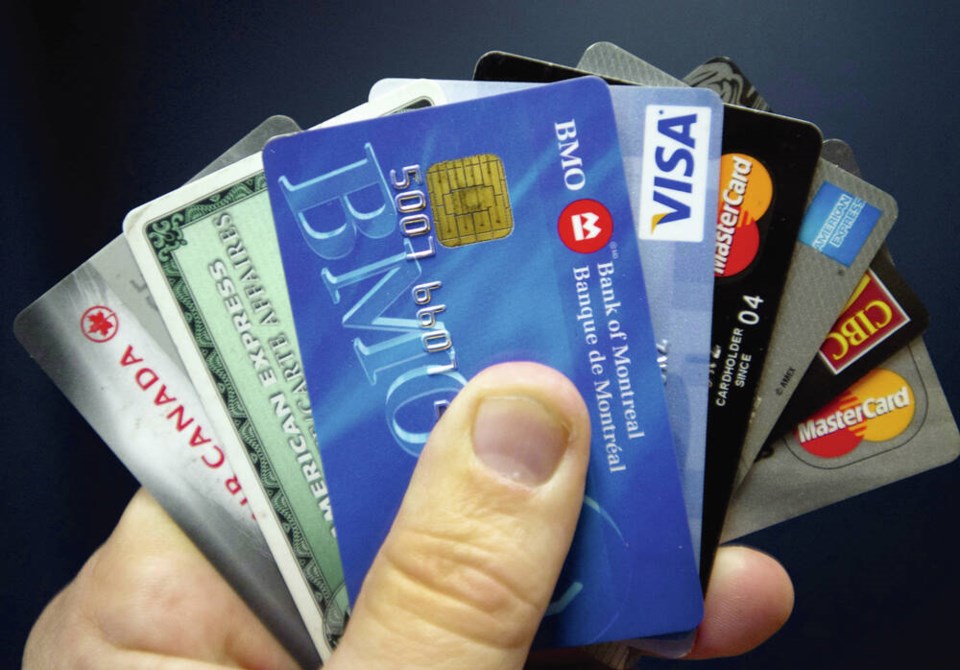A January 2022 report from one of the largest chartered professional accountancy and business advisory firms in sa╣·╝╩┤½├Į found that more Canadians are engaging in what Meyers Norris Penny calls “bad financial habits.”
Topping the list of bad habits is making minimum credit-card payments, followed closely by borrowing money that can’t be paid back quickly.
The report says 45 per cent of Canadians say they regret the amount of debt they have taken on, with 16 per cent saying their debt situation is worse than it was a year ago.
According to Equifax, a nationwide credit bureau, Canadians in the 18-25 age range shoulder an average of $8,333 in personal debt, while those in the 26-35 range carry non-mortgage debt that’s double that, at an average of $16,801.
All of this leads me to believe that of all the life skills taught in Grades 8 through 12, there is a strong argument to be made for a course about the financial monster that lurks in the swamp of too-easy-to-obtain credit-card options.
The central theme and oft-repeated mantra of such a course would be “credit does not mean extra income.”
A second and equally important understanding would be that credit doesn’t mean more money to spend. In fact, simple arithmetic demonstrates that credit-card or loan payments of any kind equate with having less money.
The bottom line, the takeaway from a Grade 11 or 12 course in financial literacy, should be that credit is a way of spending money you don’t have but will eventually have to find somewhere, somehow.
Bear in mind that while the minimum age to obtain a credit card in sa╣·╝╩┤½├Į is 19, there is no requirement to demonstrate that an applicant has taken any kind of specific preparatory education about what to do, or more importantly what not to do, with a credit card.
Given that for much of their pre-adult lives, teenagers have been bombarded with a “buy, spend, acquire” message, in what the ad industry calls “Joy Marketing” (our product can make you much happier than you are now), one’s very own credit card can seem like the immediate way out of the social embarrassment of youthful impecunity.
Of all the financial concepts that should be taught in the final years of senior secondary education, number one is the personal impact of credit-card compound interest, the fiscal foundation of the credit industry.
That alone would make the biggest impact on our kids’ futures.
Fortunately, help is at hand. For a teacher planning a Grade 11 or 12 course on how to establish and maintain personal financial stability, the Financial Consumer Agency of sa╣·╝╩┤½├Į has some online suggestions.
Given the world our kids are moving into, one of skyrocketing rent, food and fuel costs coupled with significant post-secondary tuition rates and jobs that pay minimum wage and provide no benefits, there is probably no better time to consider those suggestions.
There is a budget planner that includes advice about paying down debt and establishing savings goals.
Further information is provided about how to compare bank-account interest rates, monthly fees, transaction fees and services, along with how to compare credit-card interest rates, annual fees and rewards.
Possibly most useful to a 19-year-old coming to terms with the long-term implications of a Visa or MasterCard shopping spree, there is a credit-card payment calculator that helps the newbie cardholder find out how long it will take to pay off a credit card and how to pay it back faster.
The final topic of the proposed Grade 11/12 financial literacy course is about the financial black hole of the student loan.
In sa╣·╝╩┤½├Į, the average individual student-loan debt after a four-year degree or other post-secondary program is, at the low end, more than $30,000. In 2019, the sa╣·╝╩┤½├Į government eliminated interest charged on the provincial part of the student loan, but the federal part — the larger portion of a student loan — still accrues interest over the repayment period, however long that may be. In fact, the federal government charges the highest rate of interest on student loans of any jurisdiction in sa╣·╝╩┤½├Į.
Tanysha Klassen, chairperson of the sa╣·╝╩┤½├Į Federation of Students, writes on the federation’s website that sa╣·╝╩┤½├Į has the lowest amount of non-repayable financial assistance, such as grants, in sa╣·╝╩┤½├Į, adding that between skyrocketing tuition fees and no comprehensive grants program, students and their families are “forced deep into debt before even getting a start on life.”
As 19th-century novelist and social commentator Charles Dickens explained through the clerk character Wilkins Micawber in the novel David Copperfield: “Annual income, twenty pounds; annual expenditure, nineteen pounds; result, happiness. Annual income, twenty pounds; annual expenditure, twenty-one pounds; result, misery.”
Geoff Johnson is a former superintendent of schools.



